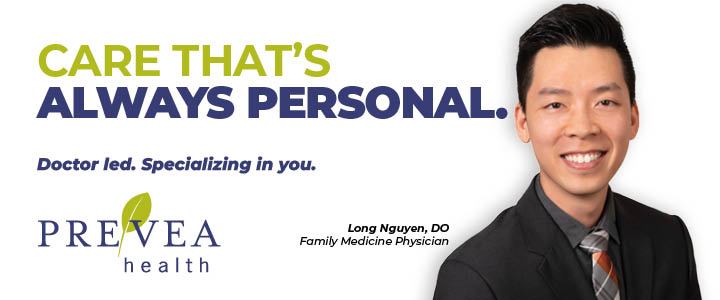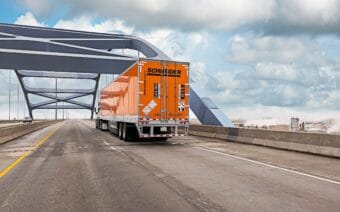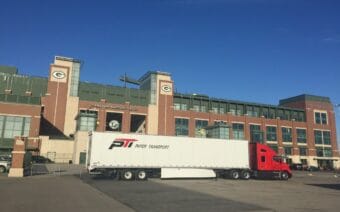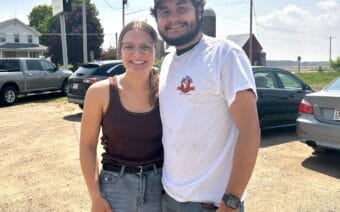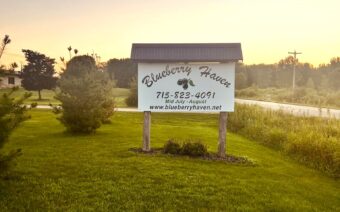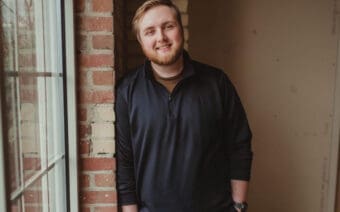
November 29, 2023
OSHKOSH – Sometimes, when someone chooses a new path – whether that be a new career, moving to a different city or even making a friend – they may not realize in that moment the kind of impact that choice will have on them years down the road.
For Jim Casper, a veteran and Oshkosh native, a childhood interest in airplanes led to more than four decades of volunteering with EAA (Experimental Aircraft Association).
Casper recently received the Henry Kimberly Spirit of Leadership award through EAA – a reflection of his 40-plus years of volunteer service to the organization.
“Jim represents the best of the EAA volunteer corps – knowledgeable, dedicated and a mentor to new volunteers,” Jack Pelton, the CEO of EAA, said.
If you were to ask Casper his thoughts about the award, he would say “it meant a whole lot to me,” however, he said he would rather use the award as a way to continue promoting and uplifting EAA, not the work he has done for the organization.
“I’m always happy to talk about EAA,” he said. “Not quite so crazy about talking about me, but as long as the subject is EAA – I’m interested.”
Becoming involved in EAA
Casper had been home from serving in the Army in Europe for three years when EAA moved to Oshkosh from Milwaukee in 1970 – which he said grabbed his attention.
“I vaguely knew what (EAA) was from magazines like ‘Popular Mechanics,’” he said. “I went and checked that out, and I was surprised at how comprehensive it was, and how much help they were giving to people who were interested in building their own airplanes.”
Casper said he “kept going back,” and in 1975, after taking a few years to build his house, he decided to start volunteering with the organization – starting with flight line operations, specifically North 40 Flight Line Operations at Wittman Regional Airport, where he helped land and park planes safely.
“(We) were, what I described as, the airplane traffic cops in the north end of the field,” he said. “The number of planes that came in here, even back then, was so vast that there was no way the controllers in the tower could handle all those airplanes… they needed people out to direct them, so I did that and enjoyed it a lot.”
When the number of airplanes coming in started to grow, Casper said some people would choose to fly in and park their planes in the dark back when EAA was open 24/7, and he chose to be a part of that flight line operations shift as well.
“I had a little group, and we called ourselves the Night Hawks,” he said. “We would do that for a few years until EAA set a closing time.”

Jim Casper (right) pictured with his daughter, Sandy Strebel (center) and his grandson, Tim Strebel. Casper said his family has also volunteered with EAA over the years. Photo Courtesy of Sandy Strebel
Every year since 1975 – except for 2020 due to the COVID-19 pandemic – Casper said he volunteered in flight line operations during EAA AirVenture Oshkosh, the fly-in convention that happens annually in July.
Casper said he also quickly became involved with EAA Chapter 252 in Oshkosh – eventually becoming the president of the chapter – “because I wanted to get involved with airplanes and airplane people in this area, and that was the way to do it.”
“I volunteered with various aspects of EAA through the chapter and around it, and got fairly wholly involved with the organization because I thought it was a terrific deal,” he said.
Volunteer growth
As Casper continued to work with the flight line operations and EAA AirVenture Oshkosh, he said he wanted to dip his toes into every other part of the organization he could.
“Each year, I looked around and volunteered at another place (at EAA) besides flight line ops to learn what was all going on,” he said.
EAA’s display buildings – where vendors would sell parts and “everything else you can imagine” – is an example of an area Casper said he would work in if there was a need for people to watch the doors.
“They needed people in the morning and late afternoon when they were opening up and closing to have the building open for vendors coming in and not the general public,” he said. “You had to stand by the door and tell people, ‘are you in here as a displayer, or did you just want to get in and look?’”
Once a year, he said he would also volunteer to ride the garbage truck around the base because, at the time, he was working at Leach Trucks building garbage trucks.
In 1986, when EAA combined flight line operations, the general aviation parking area operations and the airline parking operations by EAA’s campground, Casper said he was asked to become co-chairman of that department (named North 40 Flight Line Operations as a whole) – and eventually took over as chairman.
“Things went along, and when the old-timers all decided they were getting up there and getting kind of old to be out running around, taking care of and leading other volunteers, basically the chairmanship devolved to me.”
Casper’s volunteer efforts didn’t stop there – becoming a docent when EAA built its Aviation Museum.
“When they built the museum here, they had some help from some pretty bright people who were interested and worked in displaying things, and they did a heck of a job with the layout,” he said. “So, I signed up and I began being a docent, both greeting people and doing tours of the museum.”
Then, EAA opened up Pioneer Airport – which showcases what airports were like during the early days of air travel – and Casper said he decided to volunteer there, too.
“That was a lot of fun, because now you’ve got about four to five airplanes operating, people getting rides and purchasing rides,” he said. “In ’92, EAA opened up the Young Eagles program, so we’ve got a couple of airplanes reserved for kids who come to the museum and come over and get a free aircraft flight… We had good pilots who volunteered their time to give the kids flights.”
Dick Knapinski, director of communications at EAA, said that at the age of 83, Casper continues to put in 30-plus hours during AirVenture.

Jim Casper
?
“It’s safe to say Jim has put in more than 3,000 hours during the EAA fly-ins alone, not counting his volunteer hours before/after the event, (the hours) with the EAA Chapter or with other EAA activities at headquarters,” Knapinski said.
Watching EAA evolve
While volunteering his time with EAA for more than four decades, Casper said he’s had the privilege of watching the organization change throughout the years.
When EAA first started in Oshkosh – after being originally formed in Milwaukee in 1953 by a group of friends who had an interest in building their own airplanes – Casper said the majority of the people who came to EAA were mainly interested in just that, building their own airplanes and flying them.
Then, toward the end of the 1960s, EAA “grew very rapidly,” and the interests among people started to change.
“More people came in, and many of them were not interested in building their own airplanes and flying them, they were interested in airplanes and interested in thinking about maybe getting a pilot’s license – or even just interested in the organization,” he said. “It began to spread beyond this narrow interest.”
Casper said EAA did a good job of adapting to the change of interest in airplanes throughout the years, and “spread the interest to all kinds of different types of general aviation aircraft.”
“Paul (founder of EAA) and Audrey Poberezny were terrific at organizing things and making them work,” he said.
Now, EAA includes 200,000 members in more than 100 countries.
Another, more personal evolution Casper said he got to witness, was his family coming on board as volunteers over the years with EAA as well.
He said both of his daughters started parking planes when they were teenagers, and now his eldest runs flight line operations.
“As it happens, my older daughter is now kind of in charge of flight line ops,” he said. “I tell people, ‘I’m the old man in the corner over there.’ I still know the field. I still know a lot of the other flight line people, and so when she needs to have something done that would take her some time… she can have me do it. So, they’ll hand me a little note with an order, ‘go and do this please,’ and I’ll run and do that and come back, and do it again.”
Casper said his wife was also involved with EAA for several years.
“(She was) signing people up and making our operation work on the administration side of it,” he said.
The importance of it all
Though Casper said it was touching to receive the Henry Kimberly Spirit of Leadership award was a “shock,” since he “peripherally knew Henry Kimberly” – he said he also feels there are so many others at EAA who are more deserving.

Jim Casper (center) with his daughters Carol Corona (left) and Sandy Strebel after Casper received the EAA Henry Kimberly Spirit of Leadership Award. Photo Courtesy of EAA
“It’s a little embarrassing because I have friends who I think are more worthy than I am, who haven’t gotten things like that,” he said. “I’ve gotten a lot of awards over the years, and they’re all meaningful, very much so.”
Casper said when he started, EAA “had close to 3,000 volunteers,” and believes there are now “close to 6,000 people” – which he said shows the amount of people who believe and want to support the organization.
“I’m looking around, and there are hundreds of people out there on the grounds volunteering,” he said. “You’re going around, you’re meeting people who are in charge of things, and realizing this isn’t a paid person. They come here and do this, because there’s no way they could afford to employ that many people.”
After not volunteering as much this last year as he typically does, Casper said he is looking forward to coming back and volunteering again at Pioneer Airport when its season starts in May.
“I had quite a few things backed up (that I needed) to do on the house,” he said. “So, I kind of took a hiatus for most of the year, but I’ll be back out at Pioneer.”
Reflecting on his 40-plus years of volunteering, Casper said EAA has given much more to him than he has given to the organization.
“(Some people are) like, ‘oh, you’re such a great person to be donating your time,’” he said. “You get a lot more out than you’re putting in.”
 Trust Point: Meeting fiscal, volunteer needs across communities
Trust Point: Meeting fiscal, volunteer needs across communities CVTC students brush up on skills in new dental simulation lab
CVTC students brush up on skills in new dental simulation lab

